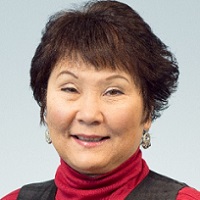 By Teresa Rivera, President and CEO of UHIN
By Teresa Rivera, President and CEO of UHIN
Twitter: @UHIN_HIE
Twitter: @uhinteresa
When you think of health information exchange (HIE), you probably envision doctors receiving hospital admission and discharge alerts, or accessing critical medical records. But physicians and hospitals are only part of the healthcare continuum. Interoperability extends to myriad organizations in which patients experience care.
Here in Utah, for example, Gold Cross Ambulance is one of the over 500 data sources submitting to UHIN’s CHIE, the state-designated HIE. This connection was made possible as part of an ONC grant UHIN received in 2015 to advance interoperability. However, Gold Cross is not just a data source, they are also a data recipient. Through ESO, its patient care reporting system (PCR is the emergency medical service industry’s equivalent to EHR), the system-agnostic, bi-directional feed allows Gold Cross field care providers to receive patient outcomes – information previously not available to them.
Moreover, through ESO, Gold Cross’s quality director is also able to view reports of all hospital diagnoses, cross referenced with the percentage of those diagnoses cited by their EMS crews. This information allows for trend analysis and the determination of what, if any, additional training may be necessary.
Take for example last year when field care providers from Gold Cross, responded to a call on a 70-year old man. Dispatch had been informed that the man had fallen. The team treated the man for the fall and transported him to the hospital.
A few days later, the EMTs logged onto their home screen dashboard, which includes a tab showing new patient outcomes populated with data from the HIE. Along with patient demographics, the EMS record number, and disposition point (i.e. where the patient was released – to their home, a care facility, etc.), it also includes the crew member’s cited reasoning for treatment that is chosen from a list of pre-determined options, and provides the ER physician’s actual diagnosis.
While reviewing the outcome for the gentleman who fell, the team learned that the ER physician’s diagnosis was sepsis. Many of the symptoms associated with sepsis would also be consistent with a fall, thus reflecting the original dispatch call.
Through this HIE-generated data, Gold Cross was able to understand a discrepancy between their cited reason for treatment and the actual diagnosis. This knowledge, which was heretofore unavailable to them, provided Gold Cross the opportunity to offer additional training to its crew members.
Since Gold Cross began receiving patient outcomes, it has held trainings and discussions around symptom recognition, comparing the caller information provided to dispatch against the actual displayed symptoms, and simply reviewing coding procedures.
Beyond training, the HIE-generated outcome information provides crew members with a plethora of additional advantages, including confirmation of their initial on-site assessment, positive reaffirmation of their skill set, and increased job satisfaction. Additionally, this knowledge can offer important closure to crew members, who previously had no means of knowing what happened to the patients for whom they provided preliminary care. This resolution is especially important for those field care providers responding to calls on children and the elderly.
Going forward, Gold Cross hopes to use the data it receives from the CHIE to create prevention programs. It is already working with UHIN and other community partners in Utah on fall preventions. Another potential use of the data would be internal clinical studies to provide for greater quality protocol development and improved patient care.
This EMS-HIE connection is just one example of the potential that interoperability offers to the multiple organizations in the healthcare continuum in which patient experience care – especially those areas that traditionally have been overlooked. As we see even greater demand from a wide array of different providers, specialists, caregivers and patients alike, the role of interoperability to help improve care will only grow.
